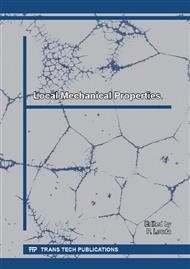p.170
p.174
p.178
p.182
p.186
p.193
p.198
p.203
p.207
Measuring Techniques for Retroreflectivity Levels of Small Signs
Abstract:
Collisions between vehicles and pedestrians are a significant problem, and substantial evidence indicates that the problem is closely linked with low illumination. A less expensive approach to enhancing the conspicuity of pedestrians involves using retroreflective material – material that has been engineered to passively reflect light back in the direction of its source. In a Textile faculty of TU Liberec was developed microscopic method to research the affecting factors textile thin bands retroreflectivity [1]. This work has been done through the use of several quality tools allowing studying different phenomena such as effect of color and technology on retroreflectivity levels.
Info:
Periodical:
Pages:
193-197
Citation:
Online since:
July 2016
Keywords:
Price:
Сopyright:
© 2016 Trans Tech Publications Ltd. All Rights Reserved
Share:
Citation:


